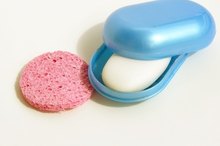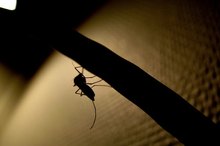How to Tell If You Have a Wasp Bite or Sting
Wasps generally do not attack unless provoked, or when defending their nest. The wasp uses the stinger as an egg-laying device so only females sting their victims, according to the University of California 3. Most people have general symptoms after a wasp sting, but a small percentage may have anaphylaxis, which may result in death from the bee venom if not treated promptly. Learn to recognize wasp stings from other insect bites to know the proper treatment for your skin irritation.
Examine the affected area of your skin for a tiny puncture wound. The tiny hole represents the sting mark. If you notice the stinger left in your skin, remove by scraping it from the skin with a butter knife or credit card.
How to Know Whether a Sunburn Will Peel
Learn More
Observe the area for redness and swelling. The skin around the puncture wound may have a small hump where the area is swollen, while the skin turns a dark red. The area may feel warm or hot to the touch.
Check for pain or itching at the sting site. The wasp leaves behind venom that your skin reacts to with localized itching and soreness.
Insect Bites That Leave Stingers
Learn More
Wash the area immediately with soap and water. Rinse the skin with cool water and pat dry with a clean towel. Cover the area with an antibiotic ointment and use an ice pack on the affected area to reduce swelling and ease the pain.
Tips
Call your doctor or visit your local urgent care facility if you experience chest pain, hives, nausea or shortness of breath as you may have anaphylaxis, an allergic reaction to bee stings.
Warnings
Avoid using tweezers or fingernails to remove a stinger as squeezing it may deliver additional venom into your skin.
Related Articles
References
- EMedicine Health: Bee and Wasp Stings
- Pest Control Canada: Bee, Wasp and Hornet Stings
- University of California; Bee and Wasp Stings; February 2003
- Golden DB. Advances in diagnosis and management of insect sting allergy. Ann Allergy Asthma Immunol. 2013;111(2):84-9. doi:10.1016/j.anai.2013.05.026
- American College of Allergy, Asthma & Immunology. Insect sting allergy. Updated February 5, 2018.
- Golden DB, Demain J, Freeman T, et al. Stinging insect hypersensitivity: A practice parameter update 2016. Ann Allergy Asthma Immunol. 2017;118(1):28-54. doi:10.1016/j.anai.2016.10.031
- American College of Allergy, Asthma and Immunology. Anaphylaxis. Updated January 29, 2018.
- American Academy of Allergy Asthma & Immunology. Stinging insect allergy.
- Pucci S, D'alò S, De pasquale T, Illuminati I, Makri E, Incorvaia C. Risk of anaphylaxis in patients with large local reactions to hymenoptera stings: a retrospective and prospective study. Clin Mol Allergy. 2015;13:21. doi:10.1186/s12948-015-0030-z
- Ludman SW, Boyle RJ. Stinging insect allergy: current perspectives on venom immunotherapy. J Asthma Allergy. 2015;8:75–86. doi:10.2147/JAA.S62288
- Fiedler C, Miehe U, Treudler R, Kiess W, Prenzel F. Long-term follow-up of children after venom immunotherapy: Low adherence to anaphylaxis guidelines. Int Arch Allergy Immunol. 2017;172(3):167-172. doi:10.1159/000458707
- Jameson JL, Fauci AS, Kasper DL et al. Harrison's Principles of Internal Medicine, Twentieth Edition (Vol.1 & Vol.2). McGraw-Hill Education / Medical; 2018.
- Vachová M, Panzner P, Malkusová I, Hanzlíková J, Vlas T. Utility of laboratory testing for the diagnosis of Hymenoptera venom allergy. Allergy Asthma Proc. 2016;37(3):248-55. doi:10.2500/aap.2016.37.3934
Tips
- Call your doctor or visit your local urgent care facility if you experience chest pain, hives, nausea or shortness of breath as you may have anaphylaxis, an allergic reaction to bee stings.
Warnings
- Avoid using tweezers or fingernails to remove a stinger as squeezing it may deliver additional venom into your skin.
Writer Bio
Constance Barker, located in the hills of southern Ohio, is the owner and writer of several financial, credit report and travel websites. She started writing in 1999 for private clients and began creating website content in 2004. She gained expertise in home improvement after she and her husband built their home themselves.








